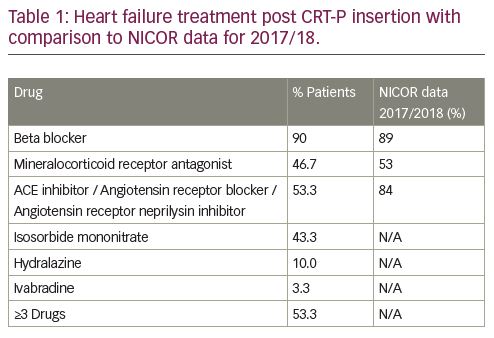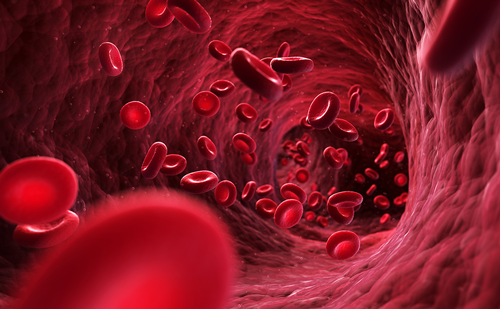Background: CRT improves prognosis in selected patients with systolic heart failure (HF). There is a paucity of data regarding longer-term outcomes in octogenarians who receive CRT.
Purpose: To evaluate long-term morbidity, mortality and guideline-based HF treatment in an octogenarian cohort of CRT recipients.
Methods: Retrospective analysis of 30 patients aged ≥80 years old who underwent CRT insertion January 2014 – December 2016 at a district hospital. Mortality was compared to patients <80 years old who underwent CRT implantation during this period (n=71) as well as against the UK national mortality census. HF medication was reviewed over the follow-up period. Hospital admissions and changes in LVEF and NYHA heart failure symptoms were reviewed.
Results: The average age of the octogenarian cohort was 86.3 years old. Over a mean follow-up period of 4.8 years, survival was 63% in the octogenarian group compared to 73% in those aged <80 years (Chi² analysis, P=0.319468; no significant difference in survival). The survival data is similar to census data for the general healthy ≥80 years population.
11 patients died; 5 were related to heart ± renal failure (2 were related to HF, 2 cardio-renal failure, 1 end-stage renal failure). Mean time between CRT implant and death in ≥80 years was 3.1 years, compared to 1.93 years in those <80 years. On average, there were 0.58 admissions/patient/year; 26% admissions directly related to cardiac pathology and 17% related to renal pathology. 5% of admissions related to drug titration. Mean number of HF medications increased from 2 to 2.5 post implant. Improvement in LVEF was noted in 67% of patients who had follow up echocardiograms. Modal NYHA class improved from Class III at implantation to Class II post implantation. HF medications prescription was similar to UK national audit data (NICOR, Table 1).
Conclusion: Octogenarians, with CRT, have excellent survival over a mean period of 4.8 years alongside improvement in HF symptoms. Post CRT, they tolerate HF medication titration, have low rates of hospitalisation and normalisation of life expectancy.








